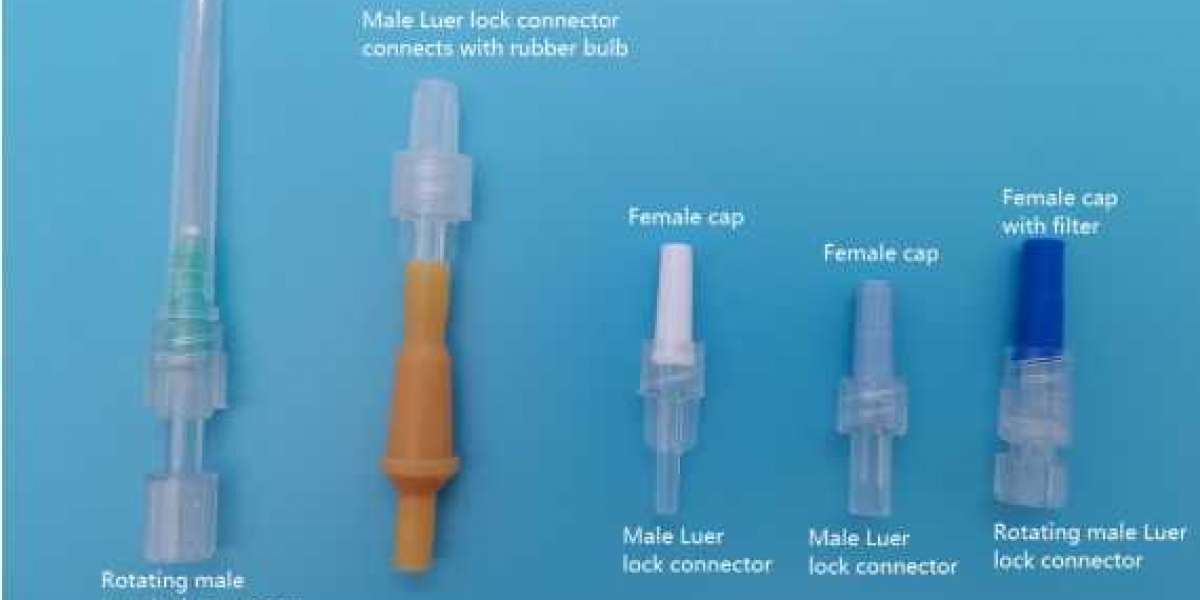These connections ensure that medical procedures are conducted safely, smoothly, and effectively. Two of the most commonly used connection types in medical devices are the Luer Slip vs Luer Lock fittings. Both serve the same fundamental purpose of securely attaching medical devices, such as syringes, IV lines, and catheters, but they differ in their mechanisms and suitability for different medical applications. Understanding the differences between Luer Slip and Luer Lock can help manufacturers and healthcare providers choose the best connection for their devices.
What are Luer Slip and Luer Lock?
Luer Slip and Luer Lock are both standardized connection systems for joining syringes, needles, and other medical components. These systems use a small, universal connector that fits securely to the device at hand, allowing for a tight and reliable fit. Despite their shared purpose, the way they achieve this connection differs:
- Luer Slip: As the name suggests, Luer Slip fittings are designed to slip or slide onto the male part of the connector. The female end is simply pushed onto the male part, creating a friction-based connection. The seal is made by the friction between the two parts, which helps to secure the connection temporarily.
- Luer Lock: In contrast, Luer Lock fittings feature a locking mechanism. The female end of the connection has threads that lock onto the male part, ensuring that the two components stay securely attached, even in the face of external pressures or force.
Key Differences Between Luer Slip and Luer Lock
- Connection Type:
- Luer Slip: The connection is friction-based, and the components simply slide together without any locking mechanism.
- Luer Lock: The connection is twist-locked, with threaded parts that securely fasten the components together.
- Ease of Use:
- Luer Slip: Generally easier and quicker to use since the components simply need to be pushed together. This makes Luer Slip fittings ideal for situations where speed is crucial, and the connection does not need to be too firm.
- Luer Lock: Requires a twisting motion to lock the components together, which takes a few extra seconds. However, this additional step provides greater security, making it suitable for applications where the risk of disconnection must be minimized.
- Security:
- Luer Slip: The connection is less secure, as it relies solely on friction to hold the components together. This means that there is a higher risk of disconnection if the connection is subject to physical stress or movement.
- Luer Lock: Offers superior security due to the locking mechanism. The twisting action ensures that the connection remains tight and is less likely to accidentally disconnect, making it ideal for high-pressure or high-risk medical procedures.
- Risk of Contamination:
- Luer Slip: Because the components can easily slip apart, there is a potential risk of contamination if the connection is not securely made or if there is any external force acting on it.
- Luer Lock: The locking mechanism reduces the risk of disconnection, which in turn reduces the likelihood of contamination due to accidental separation.
- Cost:
- Luer Slip: Generally more cost-effective to manufacture since it has a simpler design and does not require a locking mechanism.
- Luer Lock: Slightly more expensive due to the additional design and manufacturing required for the locking mechanism.
Applications of Luer Slip and Luer Lock
Each of these fittings has specific scenarios where they excel, based on the particular needs of the medical procedure or device.
When to Use Luer Slip:
Luer Slip fittings are commonly used in applications where quick connections are necessary, and the potential for disconnection is minimal or unlikely to cause significant issues. These applications include:
- Routine injections: In situations where a quick connection is needed and the risk of accidental disconnection is low, Luer Slip fittings are a good choice.
- Non-critical IV administration: For low-risk procedures where high pressure is not a concern, Luer Slip may be appropriate.
- Single-use devices: Medical devices that are designed for one-time use often use Luer Slip fittings for cost efficiency and ease of use.
When to Use Luer Lock:
Luer Lock fittings are preferred in applications where the connection needs to be secure, and there is a higher risk of disconnection or external pressure. These include:
- High-pressure situations: Procedures that involve the use of high-pressure fluids, such as certain types of infusions or injections, require a secure connection that can withstand external forces without disconnection. Luer Lock fittings are ideal for such applications.
- Long-term use: For medical devices that are connected for extended periods, such as catheters or IV lines, Luer Lock ensures the connection stays intact, even with movement or handling.
- Surgical procedures: In operations where every connection must be secure to prevent accidents or contamination, Luer Lock provides the necessary security and reliability.
Pros and Cons
Both Luer Slip and Luer Lock have their strengths and weaknesses. Here’s a comparison to help determine the best choice for a given situation:
Feature | Luer Slip | Luer Lock |
Ease of Use | Quick and easy to connect | Requires twisting to lock |
Security | Less secure, prone to disconnection | More secure, less likely to disconnect |
Risk of Contamination | Higher risk due to accidental disconnection | Lower risk due to secure connection |
Cost | More cost-effective | Slightly more expensive |
Applications | Low-risk, quick connections | High-risk, critical, and long-term connections |
Conclusion
Both Luer Slip and Luer Lock connections have their place in medical devices, and the choice between them depends largely on the specific application and requirements of the procedure. Luer Slip fittings are ideal for situations where quick, temporary connections are needed, and the risk of disconnection is minimal. On the other hand, Luer Lock fittings provide enhanced security and are preferred in high-pressure, high-risk situations or where long-term connections are required.
Ultimately, the decision between Luer Slip and Luer Lock should be based on the balance between the need for ease of use, security, and the nature of the medical procedure. By understanding the unique benefits and limitations of each, medical professionals and manufacturers can make informed choices that ensure the safety and efficiency of medical devices.




